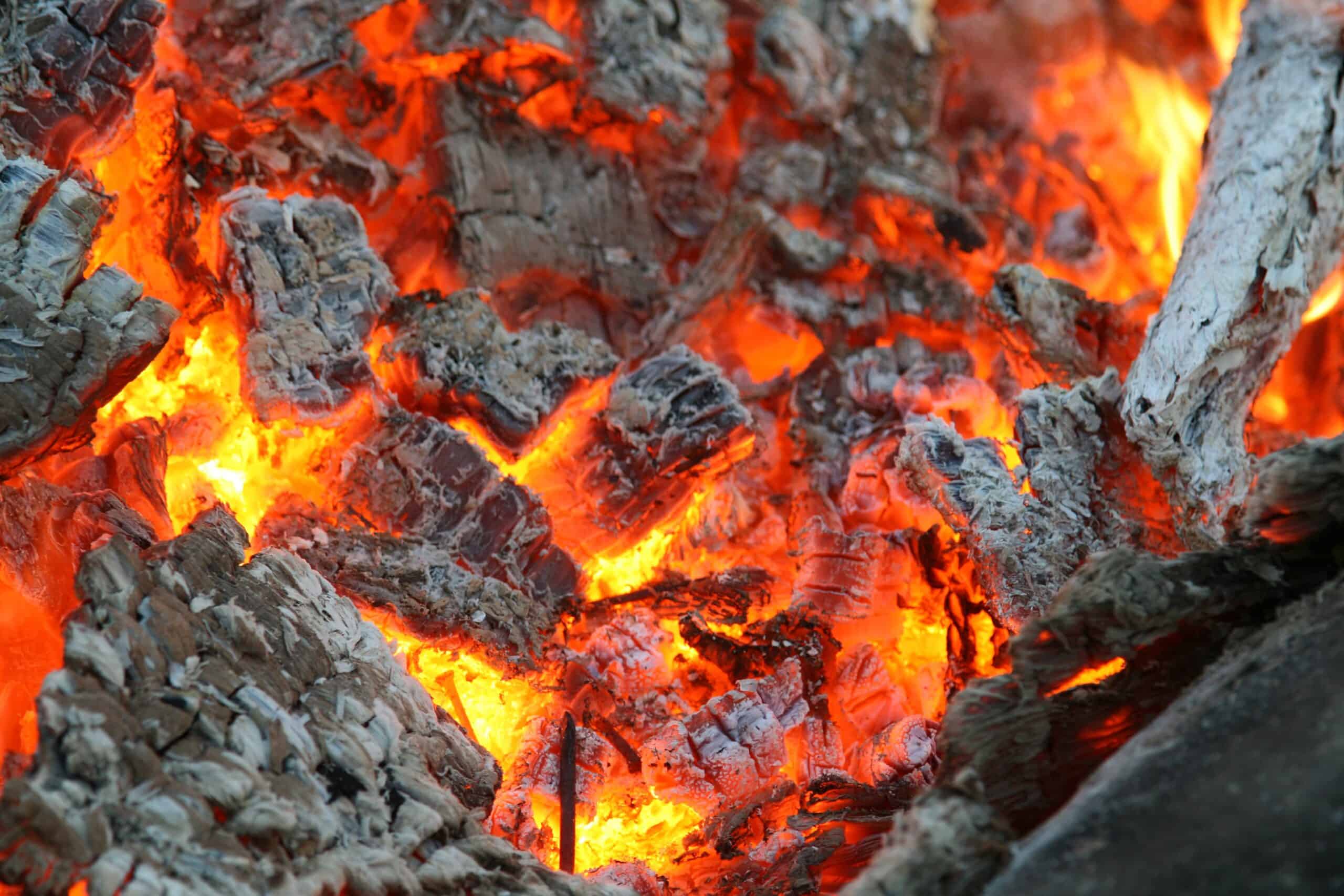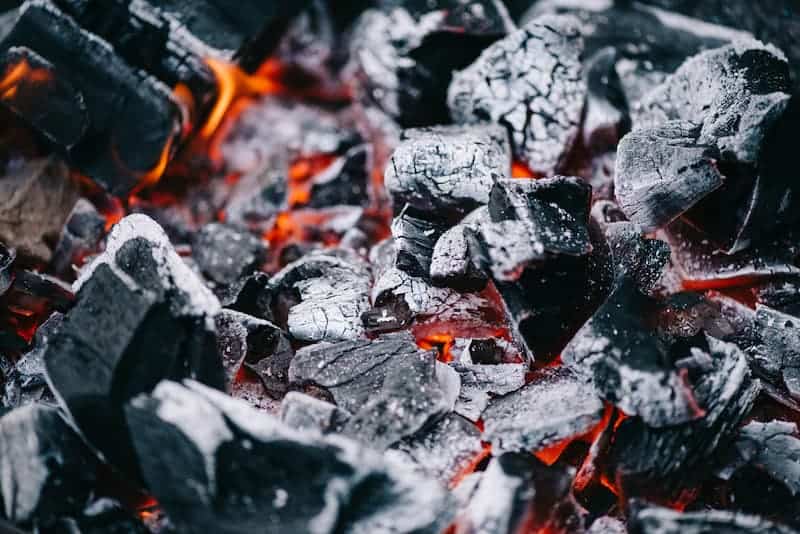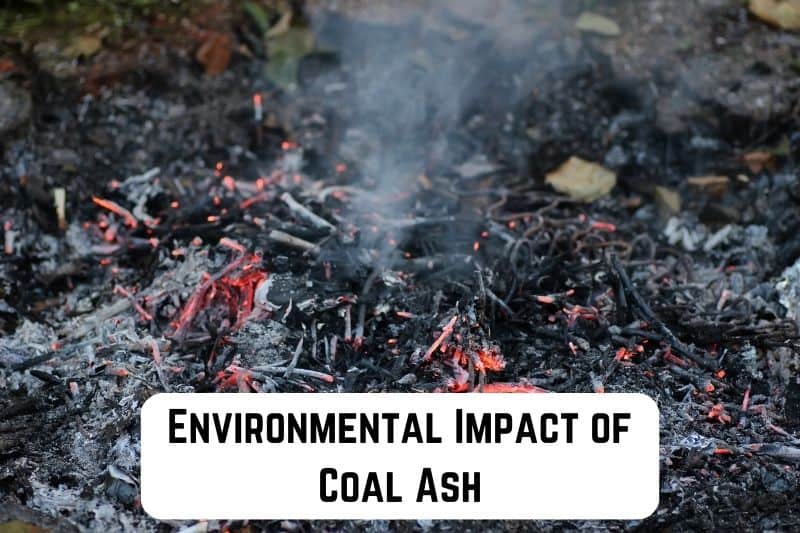Have you ever wondered about the leftovers from coal-fired power plants? They’re not just any leftovers — they’re coal ash!
But what exactly is coal ash?
You see, when coal gets burned to make energy, it leaves behind a powdery substance. This residue is what we’re referring to as coal ash, although it’s sometimes also called coal combustion residuals, usually abbreviated as CCRs.
But hold on, what’s it about this powdery substance that you need to know? Well, there’s more to it than meets the eye!
This article will dig deep into what makes up coal ash, how it affects our world, and whether it could be more than just waste. So, prepare for a captivating adventure as we unravel the mystery of coal ash. Let’s dive in!
Coal Ash Composition
Coal ash composition refers to the makeup of materials left behind after coal is burned for energy production.
Here’s a breakdown of the key components:
- Silica (SiO2): This is one of the primary components of coal ash, contributing to its hardness and abrasiveness.
- Alumina (Al2O3): Another significant component, alumina adds strength and stability to coal ash.
- Iron Oxide (Fe2O3): This component is responsible for the characteristic color of coal ash, although it also influences its chemical properties.
- Calcium Oxide (CaO) and Magnesium Oxide (MgO): These oxides contribute to the alkalinity of coal ash, affecting its interaction with water and soil.
- Trace Elements: In addition to the major components, coal ash may contain trace elements such as arsenic, mercury, and selenium, which can have significant environmental implications.
Each of these components plays a part in determining the characteristics of the coal ash produced. But then, it’s worth noting that the composition of coal ash can vary depending on factors such as the type of coal burned and the combustion process used.
Byproducts of Coal Ash
Now that you know the composition of coal ash, let’s look at the byproducts of this powdery substance.
Coal ash, a byproduct of burning coal for energy, contains various components that can have both positive and negative impacts on the environment. These byproducts majorly consist of three main types:
- Fly ash
- Bottom ash
- Boiler slag
- Flue Gas Desulfurization (FGD) Material

Let’s take a closer look at each of these elements.
1. Fly Ash
This byproduct consists of fine particles carried up with the exhaust gases, or flue gas if you like, during combustion. Fly ash is rich in silica and alumina, making it helpful in producing cement and concrete. It is usually collected from flue gas through electrostatic precipitation, baghouses, or by the use of mechanical devices like cyclones.
2. Bottom Ash
The next byproduct is just that — ash byproduct that settles at the bottom of boilers after combustion. Unlink the fly ash, which consists of fine particles; bottom ash has larger particles. The byproduct is useful in several applications, including as an aggregate in construction materials like asphalt pavement or soil amendment.
3. Boiler Slag
Formed from melted coal ash in the boiler, boiler slag is a dense, glassy material rich in silica and alumina. The byproduct is often used in construction applications thanks to its durability and resistance to wear.
4. Flue Gas Desulfurization (FGD) Material
FGD material is a byproduct of the flue gas desulfurization process, which removes sulfur dioxide emissions from coal-fired power plants. It contains calcium sulfite or sulfate, along with other elements removed during the scrubbing process.
Environmental Impact of Coal Ash
Coal ash, despite its utility in various industries, poses significant environmental challenges due to its composition and disposal methods.
Here are several ways in which coal ash can impact the environment:
1. Water Contamination
One of the environmental impacts of coal ash is that it can pollute our water aquifers. Coal ash can sometimes contain heavy metals and other toxic elements that can leach and contaminate groundwater and surface water bodies.
This water pollution poses risks to aquatic ecosystems and human health through bioaccumulation in the food chain. Chromium, for instance, is linked to allergic dermatitis, liver damage, and kidney problems, especially in the long term.
2. Air Pollution
The other aspect affected by coal ash is air. Particulate matter and trace elements released during coal ash disposal and utilization processes contribute to air pollution.
Inhalation of these pollutants can lead to respiratory problems and exacerbate existing health conditions, particularly in communities near coal ash facilities.
In fact, as per the report by Physicians for Social Responsibility and Earthjustice, inhaling coal ash can cause asthma attacks, attract cancer, and cause or exacerbate lung diseases.
3. Soil Degradation
Besides water and soil pollution, coal ash can also negatively impact the health of the soil. Direct application of coal ash to soil can alter its chemical properties, affecting soil fertility and plant growth.
Sure, slight amounts of ash coal can be beneficial to plants, thanks to the high amounts of potassium it features and other essential compounds. But then, the problem comes with elevated levels of trace elements in soil.
Due to high amounts of heavy metals and other toxic elements in coal ash, this byproduct of coal power plants can lead to bioaccumulation in crops, posing risks to human health through food consumption.
4. Ecosystem Disturbance
Another thing we have to mention is that the disposal of coal ash in landfills or impoundments can disrupt local ecosystems and habitats. The physical presence of coal ash alters soil structure and composition, affecting plant and animal communities in the surrounding area.
A case in point is what happened in Uniontown, Alabama. From 2009 to 2010, four million tons of coal ash resulting from the 2008 TVA Kingston disaster in Tennessee were transported to a landfill in Uniontown, Alabama.
Residents living nearby reported suffering from respiratory illnesses, nausea, headaches, and dizziness. They also expressed concerns about the coal ash dust covering their homes and cars, impacting their daily lives.
5. Contaminant Transport
Wind and water erosion can transport coal ash particles over long distances, leading to the deposition of contaminants in remote areas. This can result in ecosystem contamination and biodiversity loss in regions far from coal ash disposal sites.
6. Aquatic Toxicity
Runoff from coal ash disposal sites can introduce toxic substances into aquatic environments, harming fish and other aquatic organisms. Elevated heavy metals like mercury and arsenic levels can impair reproductive success and overall ecosystem health.
As per an article published by Earth Justice, the bioaccumulative toxic pollutants in coal ash can cause fish kills, deformities in fish and amphibians, and a wide range of health issues for people consuming these fish.
7. Greenhouse Gas Emissions
Lastly, we can’t ignore that coal ash has some greenhouse effect on our planet. You see, coal combustion and subsequent production of coal ash contribute to greenhouse gas emissions, including carbon dioxide (CO2) and methane (CH4).
These emissions contribute to global climate change and its associated environmental impacts. Therefore, to some degree, the process of coal ash production can be attributed to the current global warming dilemma.

How Dangerous is Coal Ash?
Coal ash, despite its widespread use and beneficial applications, poses significant risks to human health and the environment.
Let’s delve into the potential dangers associated with coal ash:
1. Human Health Risks
As already stated, coal ash contains various toxic substances. This includes heavy metals like arsenic, lead, mercury, zinc, and chromium.
Unfortunately, exposure to these contaminants, either through inhalation, drinking polluted water, or feeding contaminated plants or animals, can lead to a range of health problems, including respiratory issues, neurological disorders, cardiovascular diseases, and even cancer.
This mostly affects people close to coal-fired plants or coal ash disposal sites, although sometimes wind may blow the element miles away, spreading the risk to people living far from the disposal site.
2. Environmental Impacts
Coal ash disposal can have far-reaching environmental consequences. They cause the contamination of soil, water bodies, and ecosystems, harming plant and animal life, disrupting ecological balance, and impairing biodiversity.
Leaching of toxic substances from coal ash storage sites can contaminate groundwater, affecting drinking water sources and aquatic habitats. Of course, soil pollution can also happen, generally affecting the productivity of the affected area.
3. Risk of Accidents and Spills
Improper handling and storage of coal ash can increase the risk of accidents and spills. Dam failures at coal ash impoundments or breaches in storage facilities can result in catastrophic releases of coal ash into surrounding areas, causing extensive environmental damage and posing immediate health hazards to nearby populations.
The physical and chemical properties of coal ash make cleanup and remediation efforts challenging and costly, further exacerbating the risks associated with accidental releases.
4. Long-Term Environmental Legacy
Coal ash disposal sites can remain environmentally hazardous for decades, if not centuries, after coal-fired power plants cease operation. Persistent soil, water, and ecosystem contamination can create a long-term environmental legacy, posing ongoing risks to human health and the environment.
Effective management strategies and remediation efforts are essential to mitigate the long-term impacts of coal ash disposal on ecosystems and communities.
Can Coal Ash be Recycled?
Coal ash can indeed be recycled, offering a sustainable alternative to traditional disposal methods. Recycling coal ash reduces the environmental footprint associated with its disposal and unlocks its potential for various beneficial applications.
But how does this happen?
Well, let’s look at how coal can be recycled:
- Concrete Production: One of the most common uses for recycled coal ash is in concrete production. Fly ash, a type of coal ash, can be used as a supplementary cementitious material, replacing a portion of Portland cement in concrete mixtures. This reduces the demand for virgin materials and improves the performance and durability of concrete.
- Road Construction: Recycled coal ash, particularly bottom ash and boiler slag, can be used as road construction aggregates. These materials provide structural support and stability to road surfaces, reducing the need for natural aggregates and conserving valuable resources.
- Manufacturing: Did you know coal ash can be incorporated into various products, including bricks, tiles, and ceramics? Well, by replacing traditional raw materials with recycled coal ash, manufacturers can reduce production costs and minimize waste generation.
- Soil Stabilization: Recycled coal ash can improve soil properties and stabilize construction sites. That’s because coal ash has pozzolanic properties that can help enhance soil strength and reduce settling, making it suitable for various engineering applications.
Generally, recycling coal ash offers a sustainable solution to the challenges posed by its disposal, turning what was once considered waste into a valuable resource. We can mitigate environmental risks and create a more sustainable future by embracing innovative recycling technologies and promoting recycled coal ash in various industries.






